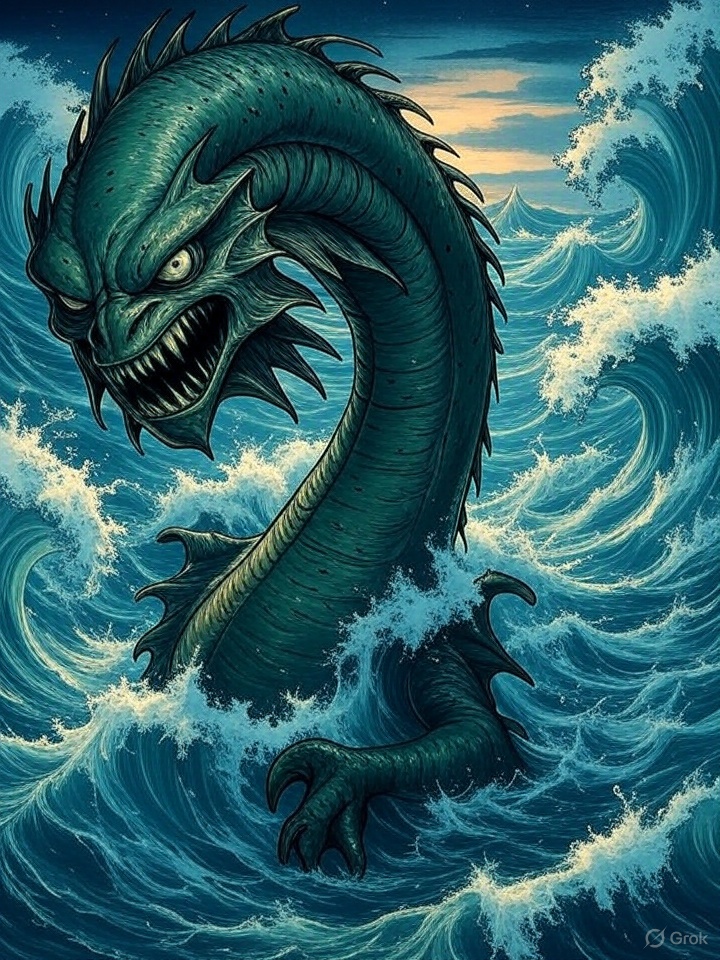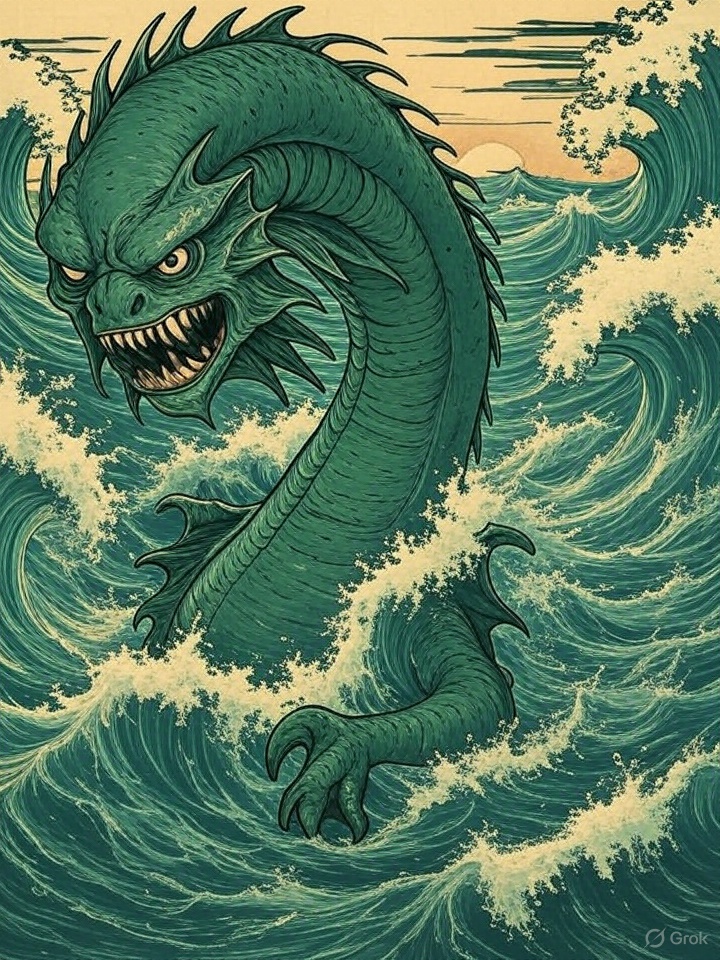Name Meaning
Overview
\n
Isonade (磯撫) translates roughly to "shore caresser" or "rocky coast stroker," referring to its stealthy movements near shorelines.
- Iso (磯) = rocky seashore
- Nade (撫) = to stroke or caress
Origin
- Features in legends from western Japan, particularly Wakayama and the surrounding coastal areas.
- Described in Edo-period yokai scrolls and sailor folklore.
Appearance
- A massive shark- or fish-like creature with dark blue scales.
- Covered in rough barbs and armed with a long, powerful tail.
- Rarely fully seen; often only the tail is visible striking from the sea.
Behavior & Myths
- Attacks boats by stealth, using its barbed tail to drag sailors into the sea.
- Causes whirlpools, sudden storms, or shipwrecks when angered.
- Said to move silently, brushing shorelines like a phantom.
Symbolism
- Represents the dangers of the sea and nature’s unpredictable violence.
- A cautionary tale for fishermen to respect the ocean’s power.
- Sometimes invoked in prayer for maritime safety.



